The Article
ACCESSION PHONO AMP FROM GRAHAM SLEE
28th September 2023
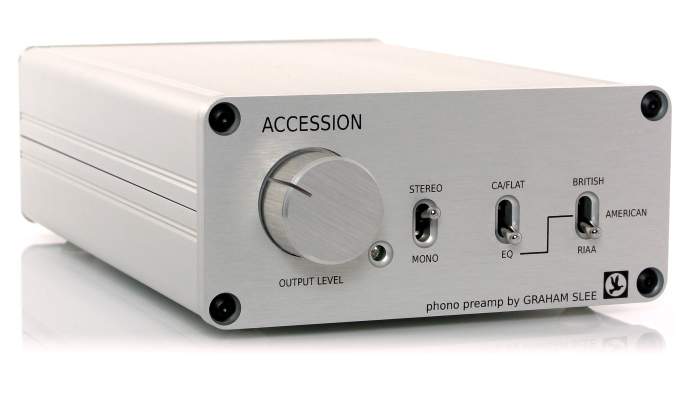
A small footprint phono amplifier with big ambitions, Paul Rigby listens to this and the upgraded power supply
This is a specialist moving magnet or, of course, moving iron, phono amplifier and a small footprint box at that, spanning 107 x 50 x 195mm. Of course, it helps that the small power supply – knowns as the PSU1 – is a separate entity. Connected to the Accession via a barrel plug and to the PSU1 via a DIN plug. A secondary means lead runs from the PSU1 to the wall via a figure-of-eight lead.
I like the notion of a standard, separate power supply because it hints at a low noise floor.
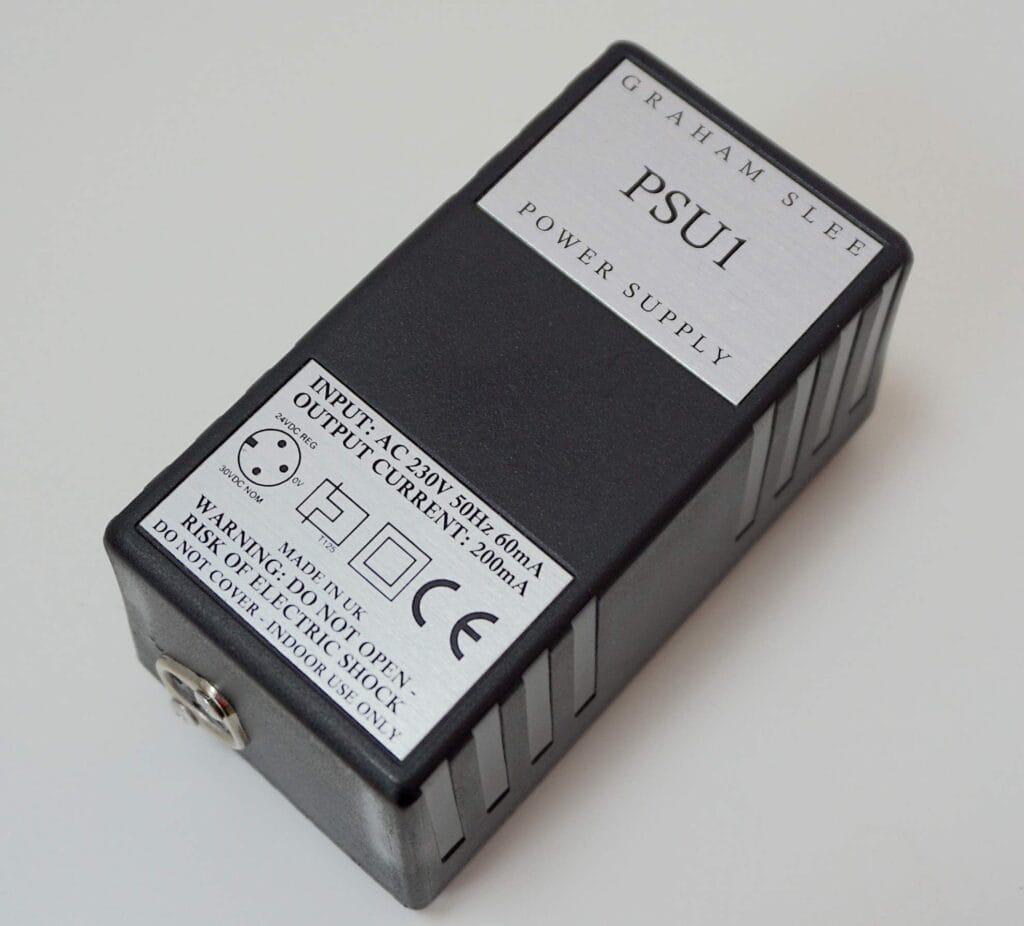
Impedance can be selected via rear-mounted DIP switches rated at 100pF, 220pf, 320pf and 0. I used 100pf during the review.
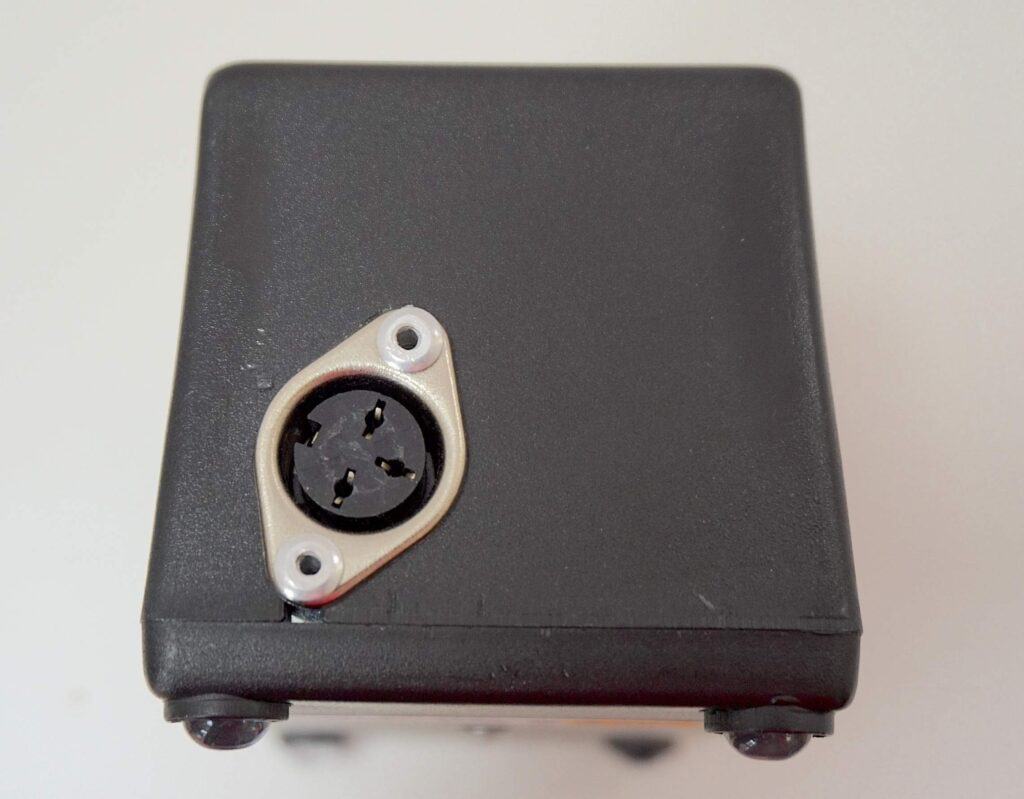
There is a volume pot on the chassis so that the Accession can be used as a pre-amplifier so that you can connect it directly to your power amplifier(s). Time was tight on this review so I didn’t review the pre-amp part, only the phono amplifier options but I hope to circle back and comment on the pre-amp later.
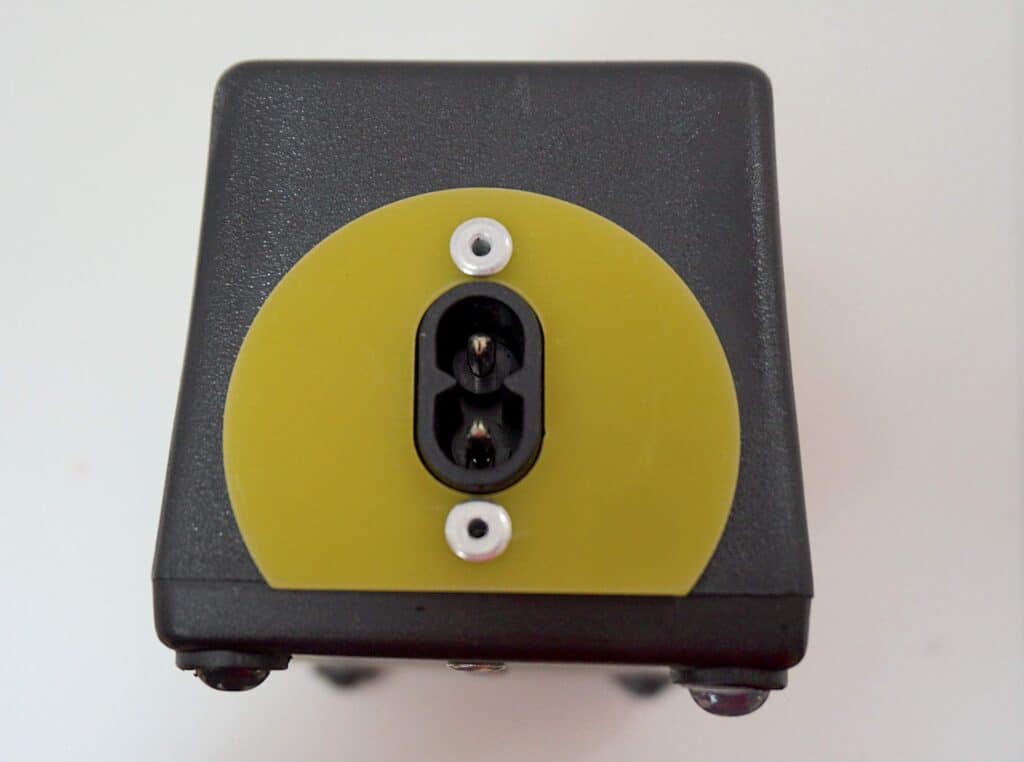
I did note that the company prefers to tackle the electrical output of the cartridge before it does anything else. Hence, the first job of this phono mp is to stabilise the output. The upshot of that is to produce a constant load to work with, hopefully improving sound.
The rear of the box offers the usual inputs and outputs plus a choice of selectable variable outputs for the pre-amplifier. The front of the chassis includes toggle switches including a mono-stereo switch but also switches for EQs. You’ll find the classic RIAA (Recording Industry of America) option, which is the nearest we’ve come to a current recording EQ standard. Any new vinyl you buy in the shops has been recorded via the RIAA curve.
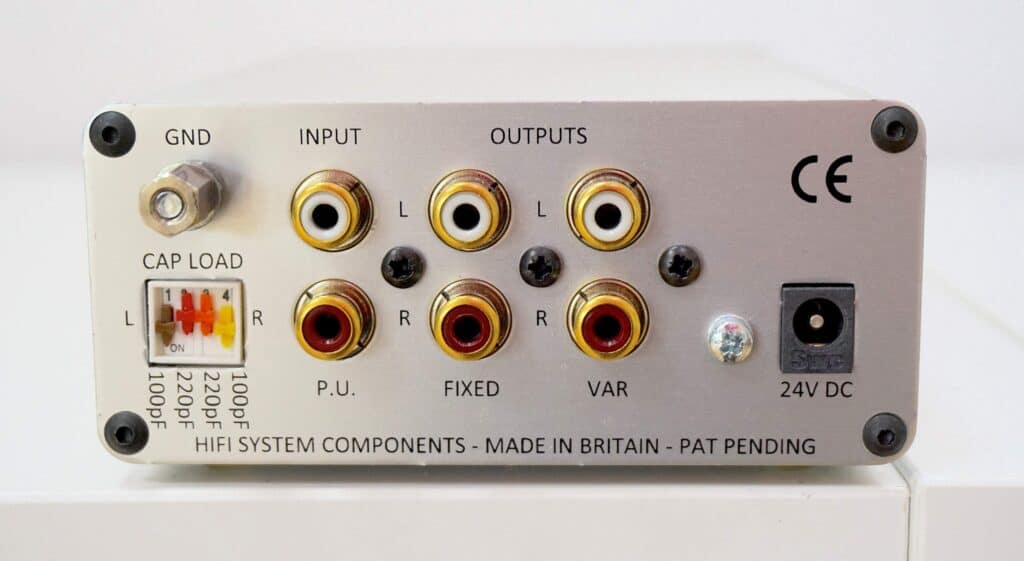
Before RIAA was adopted, and it took a long time to be universally adopted, there were dozens of proprietary EQ curves around the industry, used by a host of record labels and pressing plants. Graham Slee has grouped many of those into two groups: British and American. Hence, if you play a non-standard EQ vinyl disc you’ll have a good approximation for an accompanying EQ curve from the Accession.
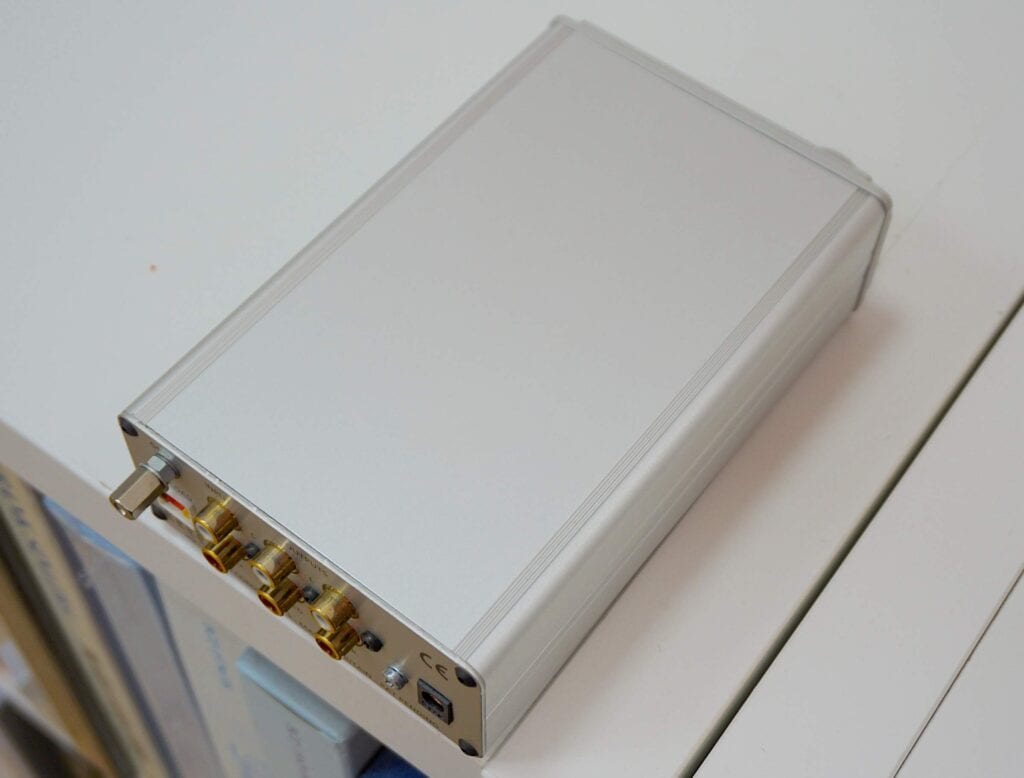
So how does this box sound then?
SOUND QUALITY
I began the sound tests with the original pressing of the self-titled Sutherland Bros’ Band album, released in 1977 via CBS and the track Hallelujah, not the drama-laden Leonard Cohen song covered by wailing Jeff Buckley, this is a rather different and, in my opinion superior, animal. This is a relatively simple song combining lead male vocal, vocal harmonies, closed-mic’ed acoustic guitars and drums plus, pushed to the rear of the mix, electric rhythm, bass and possibly a wind instrument although it could easily be a Mellotron…or a squeaky chair. Whatever it was, came through on this attractively open and neutral mix.
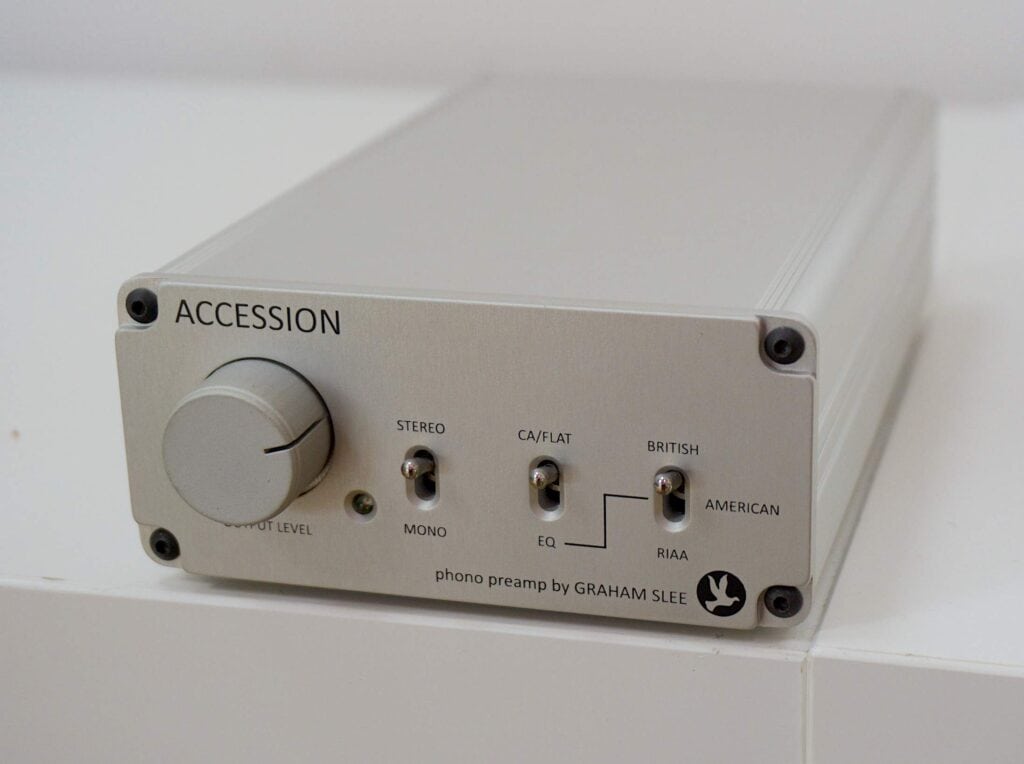
First impression from the Accession? Clean and trim. Very clean. The soundstage sounds like Mrs Mop has spent several hours shining the entire area. Trim is another word that flew into my head. There is absolutely no excess fat from this soundstage. The sense of focus is dominant from the Accession. What this means is that detail doesn’t hold any excess bloat. So bass is fast and full of impact. Midrange detail dashes in, says what it has to say and dashes out again. One of the highlights of this focus and clean delivery system was the insight around the treble which revealed far more fragile cymbal taps that I’m used to from a moving coil phono amplifier at this price, never mind a moving magnet.
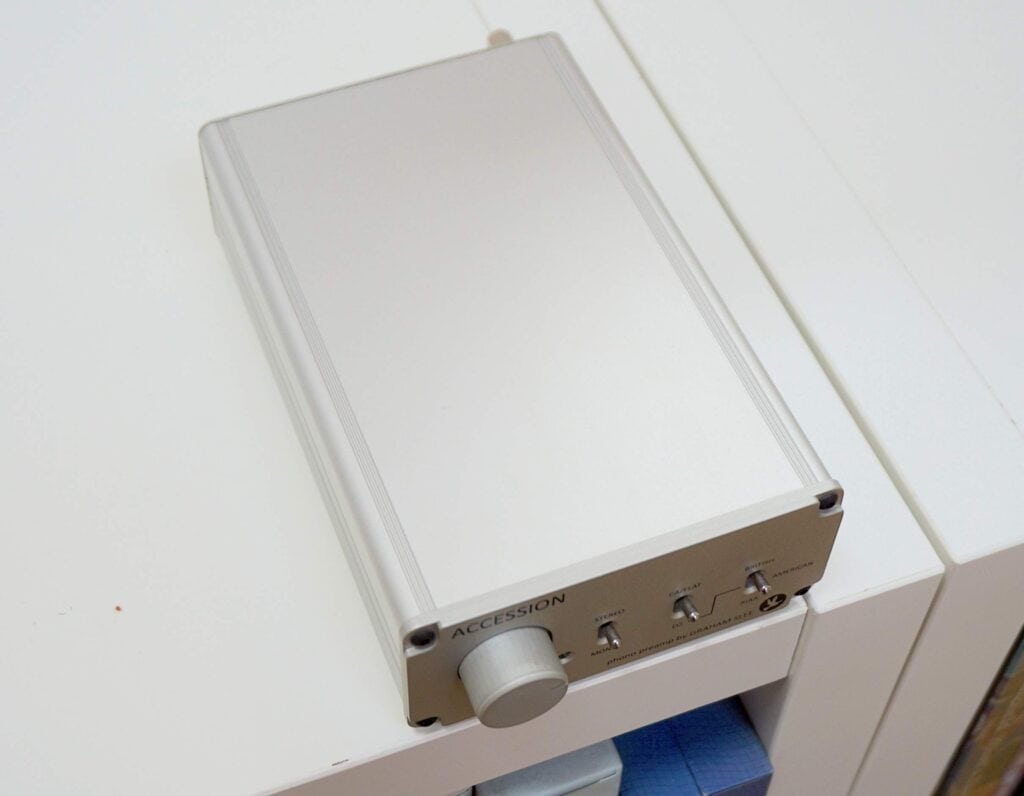
Vocals, that was another notable highlight. Vocals offered a truly articulate delivery. I was hearing words within lyrics for the first time because I could hear every shiver from the man’s vocal chords.
ENTER THE ENIGMA
It was at this point that I swopped over the power supply and upgraded that from the PSU1 to the PSU1 Enigma. And I noticed an increase in volume with the new unit in place so gain was dropped a few clicks.
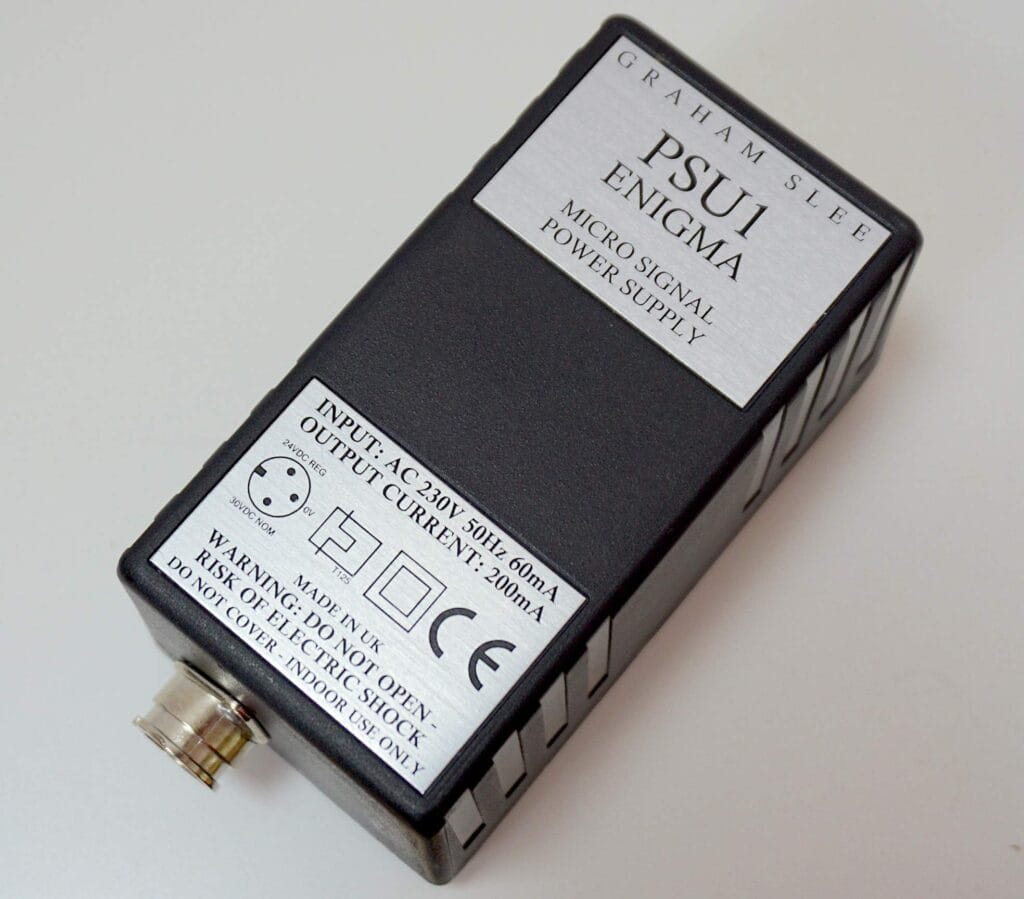
With the Enigma in place, how did the Accession sound? Wow. Just…wow. What strikes me when hearing this new Accession/Enigma combo is why the Enigma is worth £200 and the Accession is almost a grand in cash terms. Shouldn’t it be the other way around?
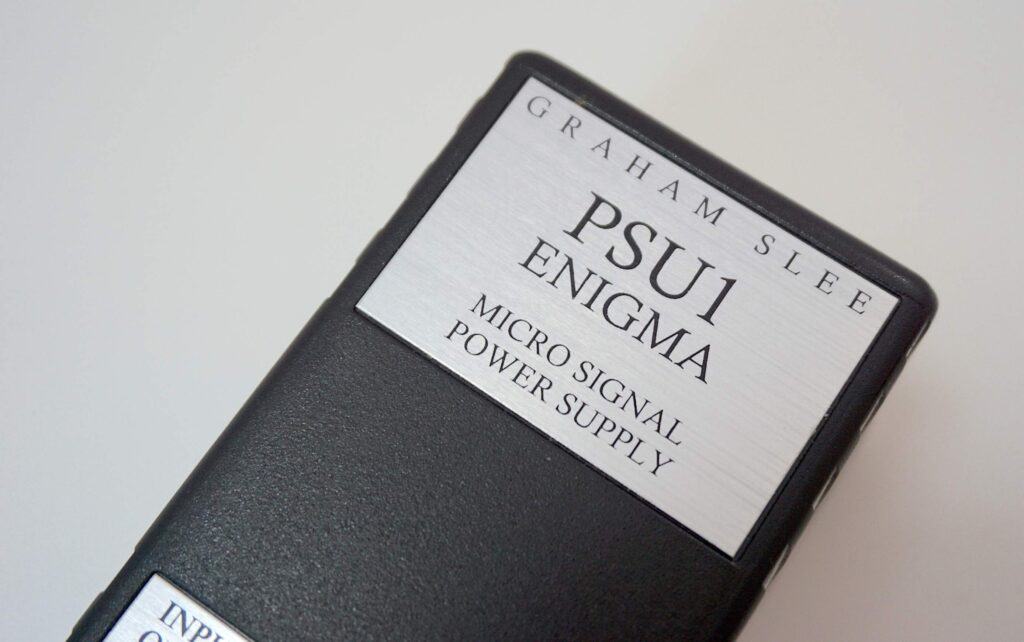
Because with the Enigma hooked up, the Accession sounds like a completely different phono amplifier. Sound quality is about five rungs further up the ladder. The Enigma makes the Accession sound expensive. The combo has a real high-end presentation with a much more naturalistic output.
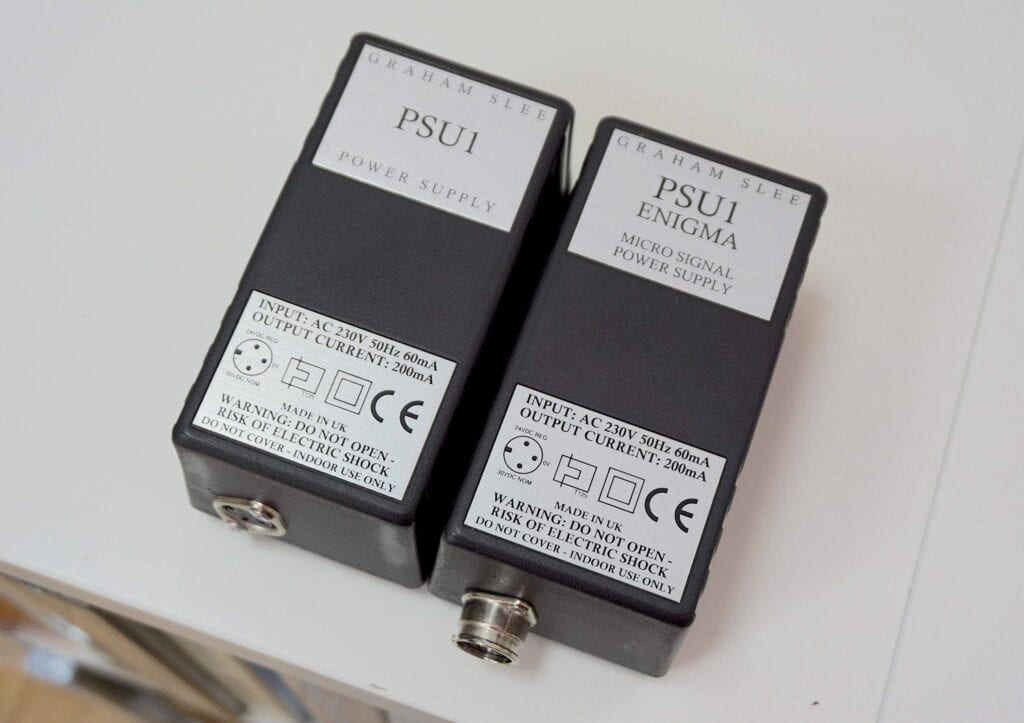
Acoustic guitar plucks offer a gentle, easy going precision. Detailed? Oh yes but with no effort. No stress. Vocals are far more emotional. Bass has an organic realism that gives you information and power but there is a sense of confidence here. A composed, relaxed power. Sometimes budget phono amplifiers show the drummer as if he’s never seen percussive instruments before and he’s only now picking up a drum stick for the first time and giving the drums a random whack. With the Accession and the Enigma, the drummer sounds like he’s done this before, if you see what I mean. You feel like you’re in good hands.
Experimental prog rock now and the album Brown Out by Morgan Fisher’s band called simply, Morgan on the Import record label from 1976. Morgan would later join Mott the Hoople which then became Mott, as they were known at that time.
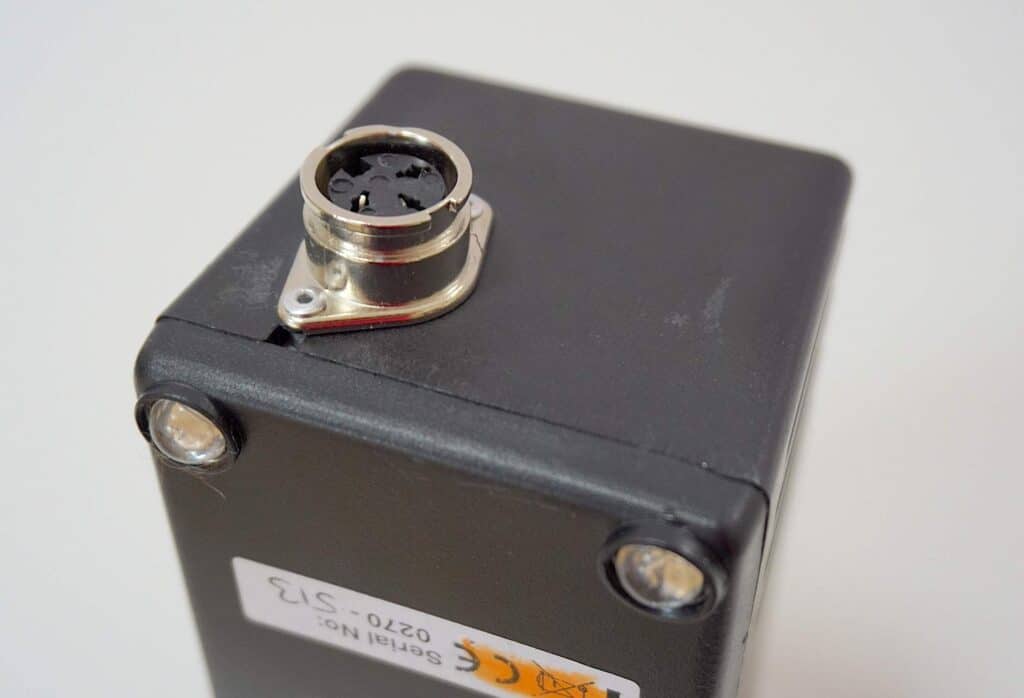
This was a higher-energy outing than the The Sutherland Bros’ Band. It was also more angular. Music darted left and right and performed on its toes with sudden changes happening at a moment’s notice.
The Accession/Enigma managed to keep pace with the pace, you might say. I never heard blurring of the mids or dragging from the bass. The Accession/Enigma duo was nimble and full of energy.
EQ SELECTION
Before we finish, let’s report on the EQs shall we? The ‘flat’ option is horrendous. Flabby, muffled bass, no midrange information, treble has gone on holiday. That’s ‘flat’. But look, ignore what I’ve just said because Flat/CA as its properly termed (CA standing for constant amplitude) is a specific option for users to digitise acoustic recordings so that you’re only hearing the record’s own characteristics. Using this option you can add you own EQ later on, in software. Hence, this option is a tool, not really a listening option.
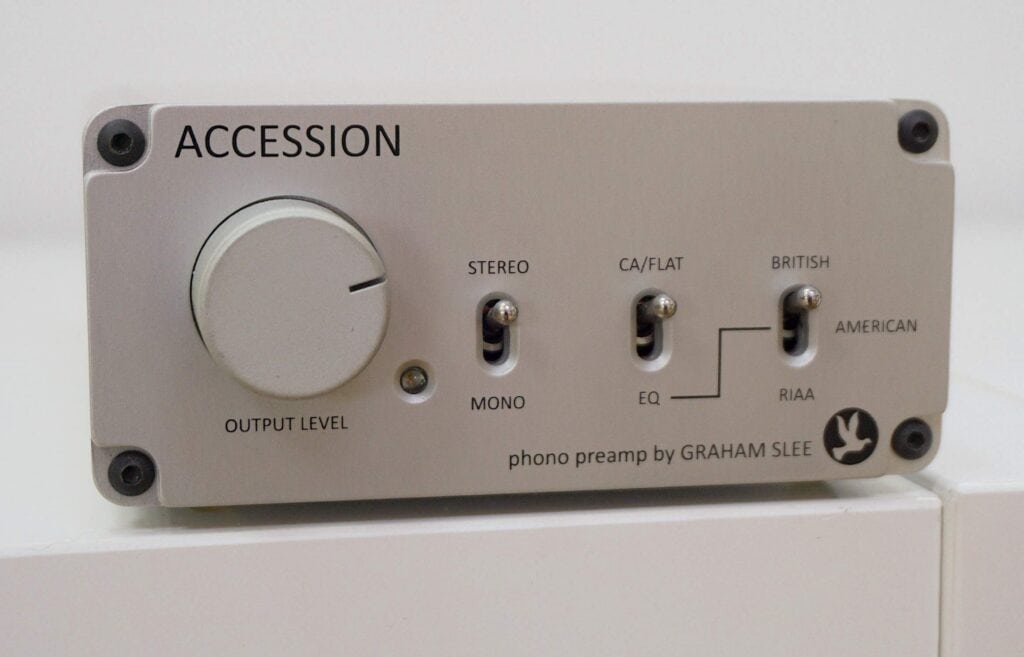
I did this review in traditional RIAA EQ mode but what of British EQ option? Thinner, rather edgy mids lose a lot of bass information while the American EQ moves over the other side of RIAA and adds a touch too much bass for my liking while slightly reducing the midrange detail.
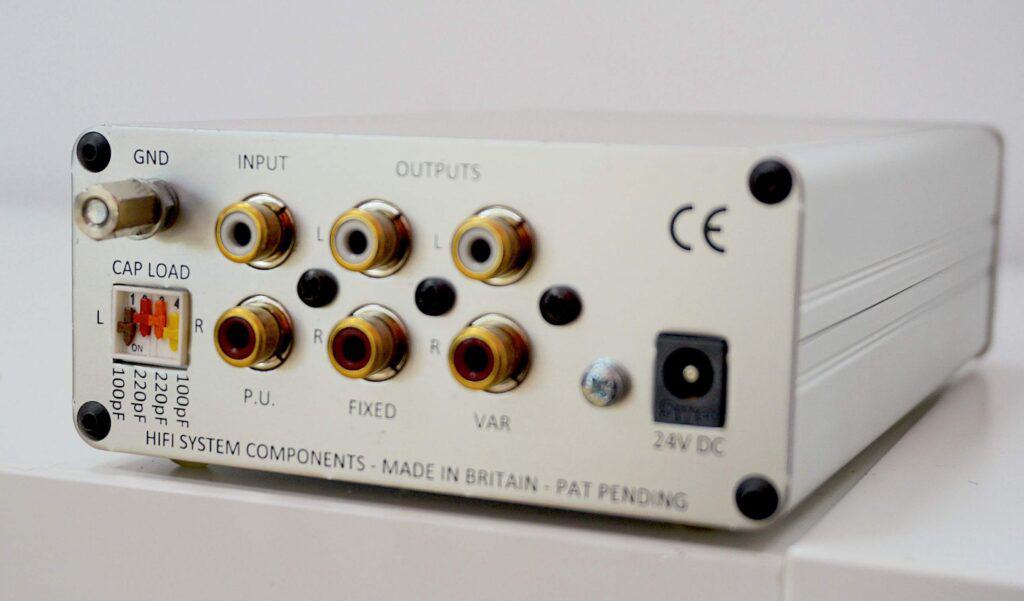
But hey, let’s not forget that I was listening to pressings based upon the RIAA EQ so these results were to be expected. I’m sure that an LP mastered, with the British EQ bias would sound rather wonderful and ditto with the american EQ. Also, my test LP might be skewing the EQ in unexpected ways so your test LP might sound a little different to my own. Even so, it’s nice to have these EQ options in case you do run across specialist pressing.
CONCLUSION
The problem with any budget moving magnet phono amplifier is that it only has the ability to give you the essential information, without any context, without any background information, without the filler that adds personality. Budget moving magnet phono amps are like Dragnet, they’re only concerned with the facts…ma’am.

With this higher-end moving magnet unit, you are given more background story, more context, far more information, in effect. A phono amplifier like this will better exploit the moving magnet technology. It will enable your moving magnet cartridge to really shine. That’s how important phono amplifiers are – done right, they enable the partner cartridge. They allow it to work at its full potential. Because most people use moving magnet tech with low-cost phono amplifiers, which doesn’t maximise moving magnet cartridge technology, then they don’t fully appreciate what moving magnet cartridges can do. If you’re a fan of moving magnet or moving iron cartridges, then you need the Graham Slee Accession because this specialist box will allow that cartridge to fly.
But if you want to challenge the performance from your friend’s high-flying moving coil set up? Then grab an Accession and an Enigma power supply and watch his jaw drop.
GRAHAM SLEE ACCESSION MM PHONO AMPLIFIER
Price: £936 (PSU1 Enigma Power Supply £200)
Website: www.hifisystemcomponents.com
GOOD: EQ options, mono switch, focused mids, precise bass, delicate treble
BAD: nothing
ACCESSION/PS1 RATING: 8
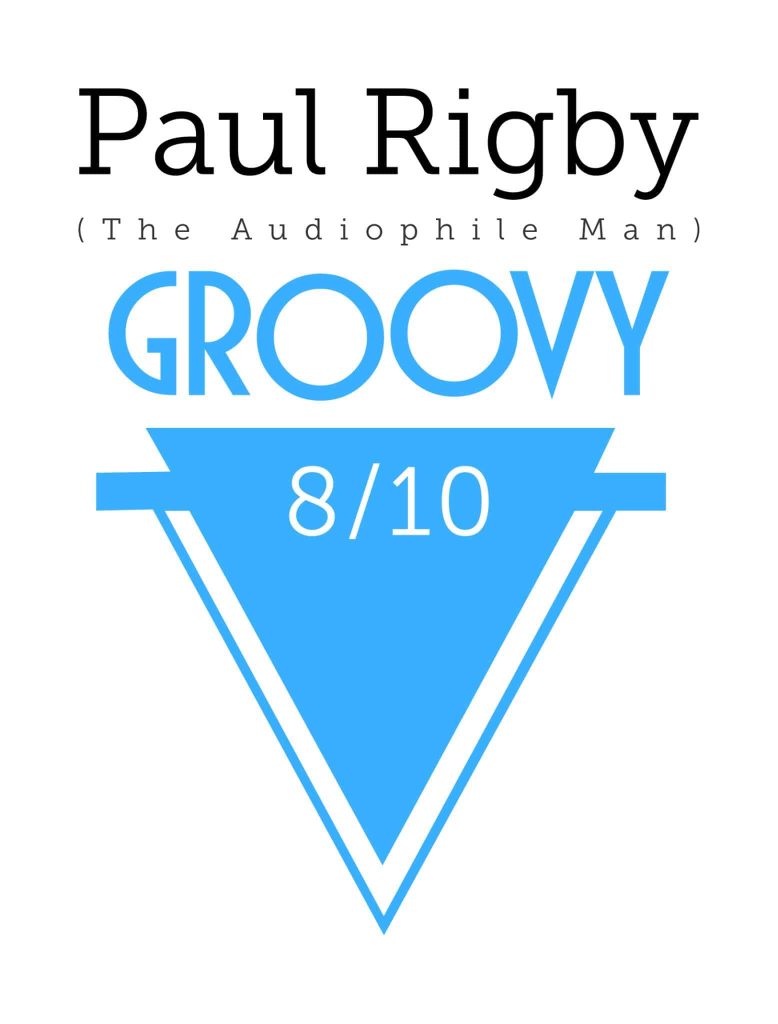
ACCESSION/ENIGMA: 9
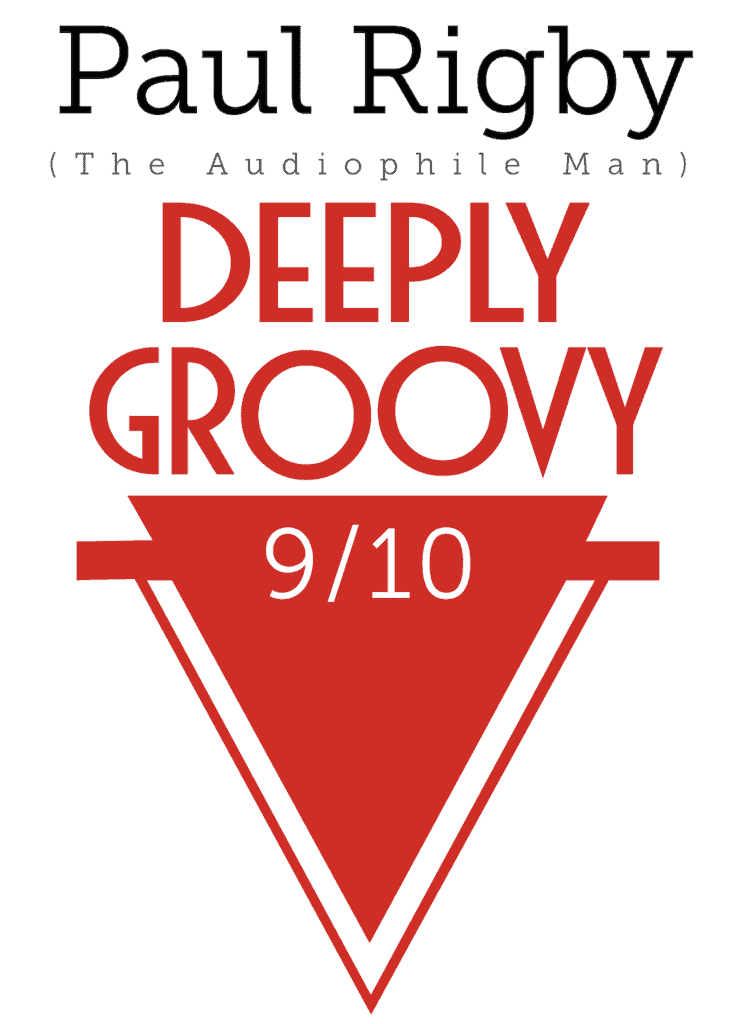


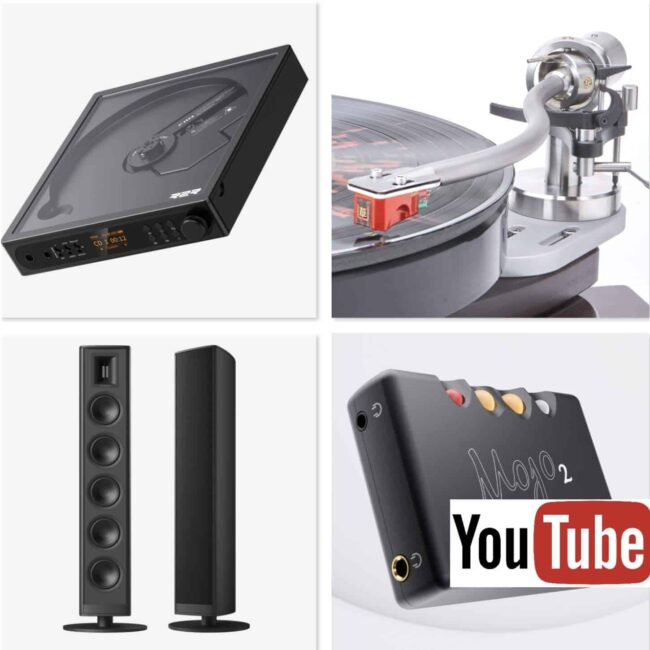
Hi, I have a quick question: did you end up using the Accession MM as a line-level preamp, taking advantage of its volume control and variable outputs? I’m really curious how it performs in that role.
I’m currently looking for a good MM phono stage to upgrade from the built-in one in my Rega Elex-R, and I’m seriously considering Graham Slee options. I’m particularly interested in the Era Gold V, so any thoughts or comparisons you might have—either on the brand or that model specifically—would be very much appreciated.
Thanks for the great review,
Álvaro
I’m afraid not – I ran out of time and space. Talk to the company if you would like to test that facility, however, they are happy for home testing units to be dispatched, so I hear.